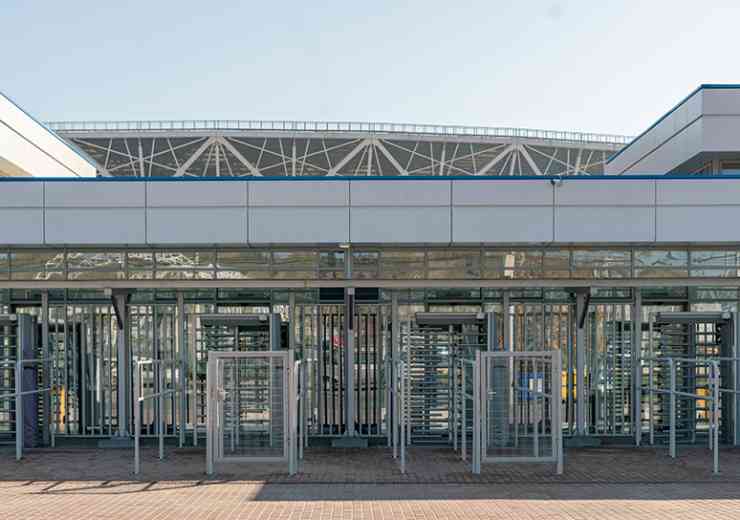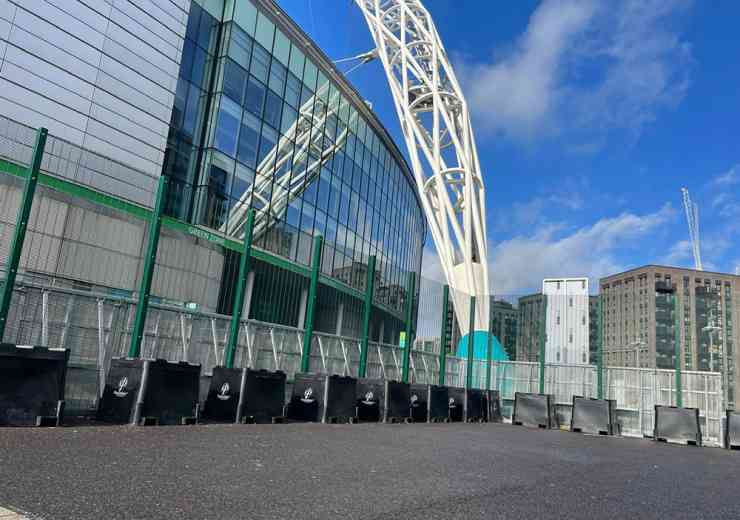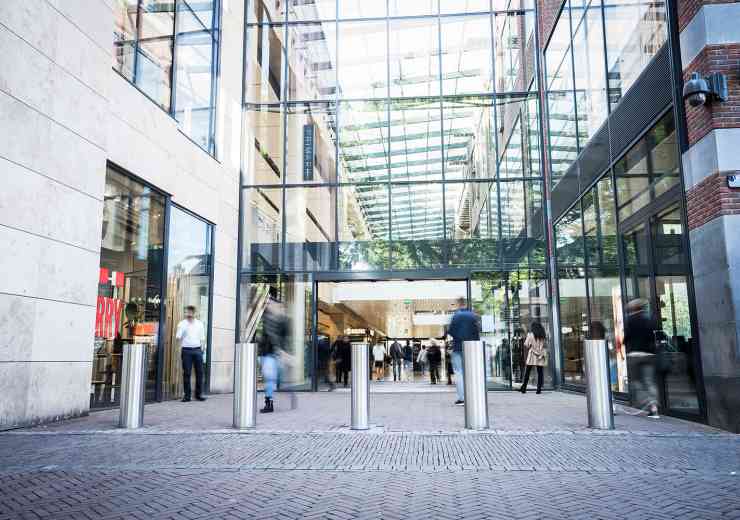Intelligence sharing and the fight against terror
 We need to go backwards before we go forwards. In 1607 England established its first colony in North America called Jamestown. Our joint history goes back literally hundreds of years – a real special relationship still exists 404 years later.
We need to go backwards before we go forwards. In 1607 England established its first colony in North America called Jamestown. Our joint history goes back literally hundreds of years – a real special relationship still exists 404 years later.
Our special relationship encompasses trade, political affairs, finance, technology, arts and science and, most important, the sharing of government and military intelligence which includes joint military combat operations in theatres of conflict throughout the world. Our joint population exceeds 380 million and the UK and USA are each country’s largest investors, some would say we speak the same language… but there are differences.
Trade and investment including tourism continue to be an important part of our joint relationship which arguably has been continually strengthened by the UK-USA Security Agreement dating back to 1940-1944, later signed as the BR-USA, and now known as the UK-USA Agreement that marked the vital World War Two cooperation between the United Kingdom and the United States.
Since 1946, appendices to the agreement were drafted and revised to include details of a strong working relationship between Australia, Canada and New Zealand covering both cultural and military subjects which helped further trust and teamwork between all countries.
What is the agreement?
The UK-USA Security Agreement is still shrouded in secrecy and hence there are some restraints within this article. This is what we do know.
We continue on a daily basis to exchange SIGINT information on all matters of interest between the US National Security Agency and the British GCHQ Government Communications Headquarters based in Cheltenham, sometimes as a re-direct from the UK Communications Electronics Security Group and from our joint armed forces worldwide. This group monitors a large variety of intelligence information, including updates on the continuing threat from terrorism, threats to our airlines, increasing cyber threats, national infrastructure, chemical, biological, radiological, nuclear and explosive threats.
The UK-USA Security Agreement also monitors economic threats to the member countries and monitors really closely the movement across borders of explosives and chemicals that could be used against us, such as CBRN and threats to the recovery programs that are necessary to counter long term damage to society. The agreement also covers science and technology exchanges that offer social and economic advantages to promote the further sharing of information and data including intercept programs and protocol and help to keep us all safe and secure in our homes and businesses.
The UK-USA Security Agreement has been described as the single most important bilateral partnership in our history as evidence by our well aligned political, trade, commerce ,financial, technological and academic sharing of high quality government and military intelligence information, as stated earlier we are also each country’s largest foreign investors.
An excellent example of the UK-USA Security Agreement is the way we cooperated during World War Two. Most Americans were sympathetic towards the UK and France during the dangerous confrontation with Nazi Germany, whilst there was some opposition to American intervention into European affairs.
Who remembers that Winston Churchill’s mother was an American? Our UK wartime Prime Minister and the UK must thank Franklin Roosevelt for US help after the fall of France for lots of aid including the possessions of 50 destroyers – in return the UK gave the United States rent free leases on numerous land and air bases throughout the British Empire.
Later the USA lent-leased Sherman Tanks, fighter airplanes, munitions, bullets, food and medical supplies. The USA by 1941 became extensively involved in the European theatre of conflict due to the real fear that Germany could eventually reach American shores.
73,000 British and 60,000 Americans stormed the beaches of Normandy on June 6, 1944, and continued to fight alongside each other until the end of the Second World War.
Throughout the war scientists and physicists from the USA and the UK and many other friendly countries worked in total secrecy on the Manhattan project which eventually achieved success in building an atomic bomb – all scientist research for the project was headed by the American physicist Robert Oppenheimer – Winston Churchill was informed later about the secret testing of the atomic bombs.
Since World War Two, the UK-USA Security Agreement is even more important. After the 1939-1945 war we had the Cold War due partially to our joint relations between the UK and USA and our old ally the Soviet Union.
The United States and United Kingdom became increasingly suspicious of the motives of the USSR – Capitalism viz Communist power. This resulted in the formation of the North Atlantic Treaty Organization (NATO) which agreed to the formation/alliance whereby if one country is attacked then it is seen as an attack on all countries signed up to the alliance.
Special bond
Our history books remind us of the Korean War, Vietnam War, the Falklands War, Iraq, Afghanistan and lots of smaller conflicts over the past 70 years that serve to remind us of the special bond between our countries.
Today the agreement is even more important. If we are brutally honest, the UK-USA Security Agreement failed us prior to the September 11th 2001, terrorist action resulted in the loss of 2,669 American and 67 British who perished at the World Trade Centre, The Pentagon and Shanksville, Pennsylvania. Others have commented on what went wrong, what we should have done better, and what lessons have we learned and put into action.
We can perhaps feel comforted that a recent very long investigation for the Washington Post revealed that the USA has over 1,200 government organisations and nearly 2,000 private companies working on top secret programs related to the threats and actions from terrorism, counterterrorism, homeland security and intelligence gathering and dissemination of information that (hopefully) gets passed as part of the UK-USA Security Agreement to the United Kingdom security organisations.
The article further revealed that over 850.000 Americans now have top secret clearance and over 10,000 security organisations are located across the USA – Washington DC has 33 buildings occupying about 17 million square feet of floor space.
Paying the price
As a reality check to try to comprehend the total cost of just the USA’s part of the UK-USA Security Agreement, the official figures concerning the war in Iraq for an almost nine year period with the loss of 4,400 Americans with more than 30,000 US troops wounded – all at a cost to the US taxpayer of around 800 billion US dollars, tens of thousands of Iraq’s also lost their lives.
The Security Agreement has had its problems. Allegations of faulty intelligence information regarding Iraq’s possession of weapons of mass destruction, and the then Prime Minister Tony Blair ‘pandering’ to the ‘requirements’ of President George W. Bush causing a ‘media storm’. And later the Scottish Parliament releasing Abdelbaset al-Megrahi – allegedly the Pan American Flight 103 bomber – back to Libya. These did not help the ‘special relationship between the UK and USA’.
In 2010 the BP-owned Deepwater Horizon drilling rig led to further diplomatic friction as a gigantic oil spillage hit the coast of the USA.
Despite the sometimes ‘rocky’ relationship, the United States and United Kingdom remains ‘the most important bilateral relationship in the world’.
Trade and mutual investments account shows the United States and United Kingdom total trade of import and exports as more than $110 billion in 2008. The agreement also yields over $606 billion in foreign direct investment. Add this to tourism, transportation between countries, and our common cultures, the music and arts – all bound by a shared history, common language and similar legal system that goes back many hundreds of years.
Today we face together challenges like cyber terrorism, and an overcrowded world, global warming and the ever-present nuclear threats from certain countries and lots of other complicated operational and strategic challenges that all reinforces the need to continue with the unique UK-USA Security Agreement.
digital issue




















